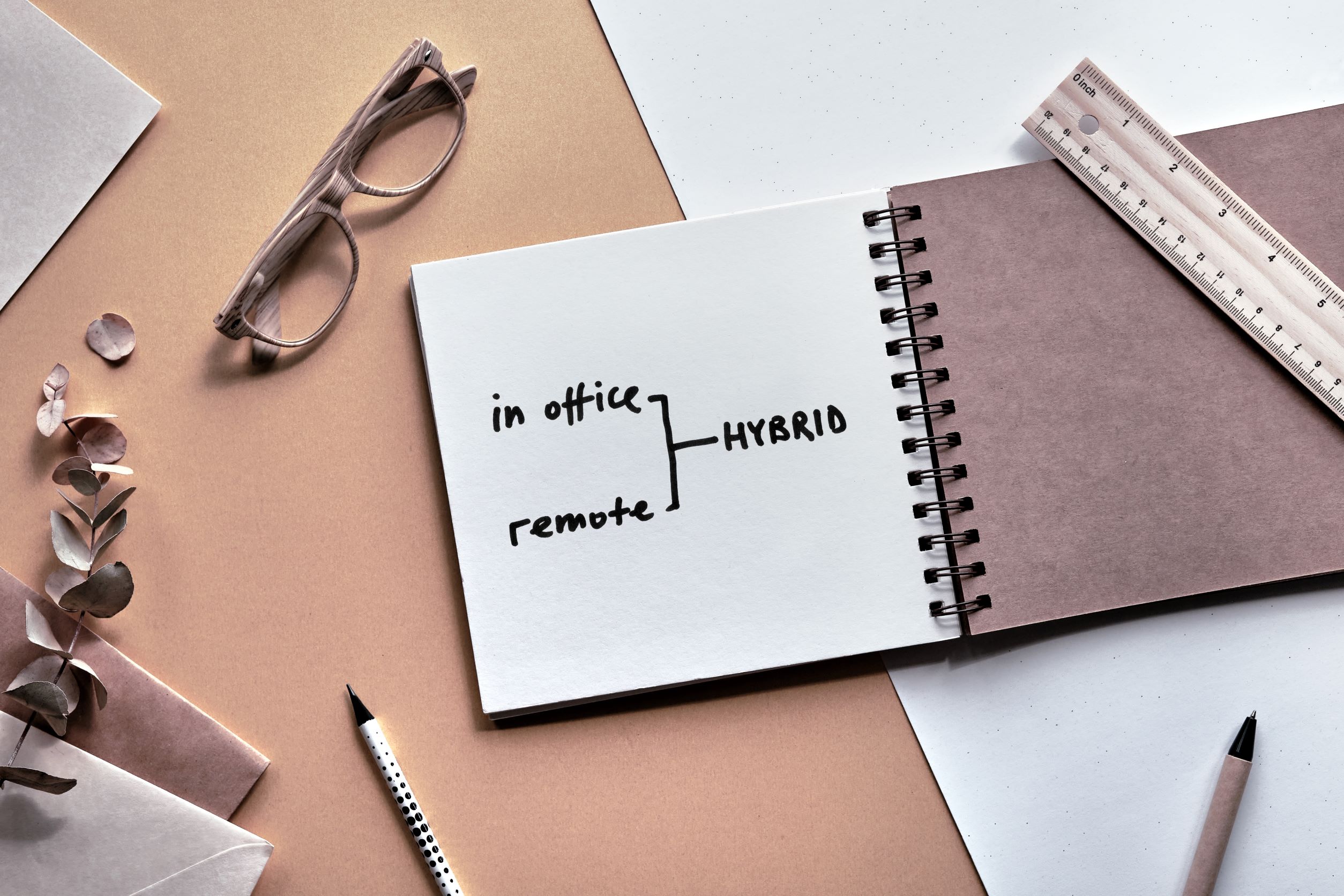
Remote Work vs. In-Person: What Does the Research Say?
March 6, 2023
How Can I Make Better Decisions in a World with Too Much Information?
May 1, 2023How Do I Build the Right Culture for Hybrid and Remote Teams?

As a long-lasting effect of the coronavirus pandemic, the workplace has seen significant changes with the rise of hybrid and remote work over the past three years.
Many leaders view the shift to hybrid and remote work as threatening, with one of their most pressing concerns being how to build or maintain an effective and cohesive company culture.
But if some degree of flexible work is here to stay, how can companies adapt and build the right culture for this new operating environment?
This article will discuss four considerations for developing an effective hybrid and remote work culture – common challenges, critical elements, collaborative tools, and evaluation criteria.
Common Cultural Challenges for Hybrid Work
The transition to a hybrid workforce has presented companies with unique challenges, which some refer to as the “5C challenges”: communication, coordination, connection, creativity, and culture (1).
Specific 5C challenges related to hybrid and remote work include (1):
- Communication barriers inherent to virtual technology, such as visual cues from body language
- Coordination problems leading to “faultlines” between in-person and remote team members
- Connection issues resulting in less happy, less committed employees
- Creativity hampered by a lack of real-time brainstorming and spontaneous sidebars
- Culture difficulties due to a lack of physical interaction
If you’re struggling with managing a hybrid team or workforce, start by understanding the 5C challenges. Then, consider using the 5C checklist outlined in this Harvard Business Review article to evaluate your current culture, analyze underlying issues, develop a plan to improve your culture, and implement your desired changes.
Critical Elements for a Successful Hybrid Culture
Working in a cohesive and effective hybrid environment requires more than just technology – it requires intentionality and dedication.
A thriving hybrid work culture can be created by building emotional connections, fostering collaboration, and finding ways to stay connected.
Additionally, implementing and adhering to the following critical elements will set you and your employees up for success.
1. Have a purpose-driven mission that people can connect with.
To create a sense of community and purpose, it is important for companies to provide their employees with a clear mission that they are proud to be a part of. Furthermore, leaders should strive to make this mission tangible by showing the collective impact of each individual’s work within the bigger picture.
2. Be fair.
A company should provide all employees with the same resources and opportunities, regardless of their physical location (2). By promoting an inclusive environment, each individual can work with the same level of knowledge and communication, helping the business reach its goals more effectively.
3. Establish two-way trust.
Establishing two-way trust is essential for a successful hybrid culture. An excellent way to do this is by giving your teams the autonomy to coordinate how work gets done, rather than operating under a micromanaging norm.
This not only helps foster connectedness and makes employees feel significant, but it can also lead to higher levels of creativity and performance. Research suggests that employees who feel connected to their organization perform up to 37% better. Additionally, those who feel more connected to the company are 36% more likely to stay (3).
Trusting your employees and regularly communicating their value will help individuals feel more connected to you and your organization, creating a stronger and healthier culture as a result.
4. Intentionally prioritize and synchronize in-person interactions.
Intentional and synchronized in-person interactions are invaluable to creating a successful hybrid culture. Therefore, it’s essential that leadership not randomly require employees to come into the office a certain number of days per week, but rather coordinate intentionally planned in-office time (4).
Prioritize getting teams together in-person to foster meaningful collaboration between teams and company leadership (4). These opportunities will help employees build emotional connections, strengthen team cohesion, and establish trust with their colleagues.
Collaborative Tools for a Productive Hybrid Culture
Hybrid companies should start embracing asynchronous (i.e., not in real-time) communication over synchronous if they haven’t done so already (2).
Asynchronous communication can provide companies with a number of advantages. For example, it helps to bridge the gap between distributed teams, enables more thoughtful and considered responses, and allows employees to work at their own pace (3).
It’s also much easier to manage teams across multiple time zones, as everyone can access the same information regardless of when they view it. In addition, asynchronous communication encourages honest and open discussion by removing the pressure of real-time conversations (2).
Additionally, companies should provide everyone access to the same collaboration software, such as Google Docs and Microsoft Office. Consider giving employees a home office stipend to help them set up an optimal workspace and enable success from any location (2).
Criteria for Evaluating a Hybrid Culture
Evaluating a company’s culture involves assessing alignment (does the employee know what the culture is and does it match the company’s mission?) and connectedness (do employees feel connected to the culture and are they committed to it?) (3).
Organizations have traditionally focused their culture-building efforts on alignment and assumed that connectedness would naturally develop. For example, before the pandemic, leaders often presumed that the design and decor of physical offices would promote an emotional connection among employees. However, this method had limitations even before the pandemic, and leaders should shift their focus to building culture in other ways (3).
As a leader, focus on building culture not through the office, but from the work itself. Regularly communicate to employees that they are valued for their contributions regardless of their physical location (3).
The more employees feel their contributions are valued, the more connected to the culture they will become.
Conclusion
Building the right culture in today’s hybrid work environment requires a mindset shift from indexing on physical proximity to focusing on emotional connections, starting with a purpose-driven mission that your employees can collectively connect with.
To succeed as a leader in this new environment, create a culture of fairness, trust, and cohesion by accentuating coordination, communication, and collaboration within your team.
References
- Harvard Business Review: 5 Challenges of Remote Work – and How to Overcome Them
- Harvard Business Review: What Great Hybrid Cultures Do Differently
- Harvard Business Review: Revitalizing Culture in the World of Hybrid Work
- Boston.Com: Harvard Study: Just 1 to 2 Days In Office Per Week Is Most Effective
